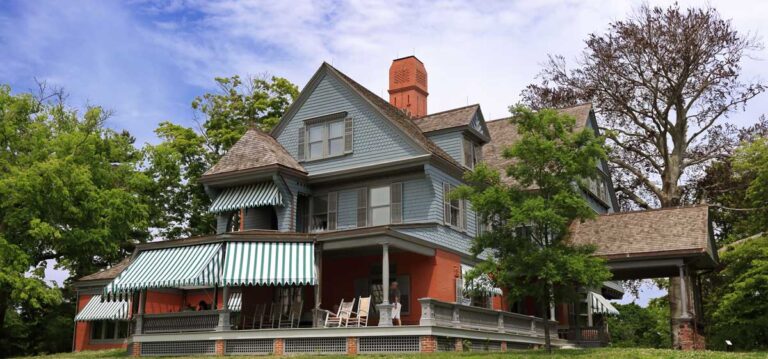
Travel about an hour from the hustle and bustle of New York City to the north shore of Long Island and enter the land of “The Great Gatsby,” the memorable book by F. Scott Fitzgerald. Here you will also find the Oyster Bay of Long Island.
The “Gold Coast” in Long Island, New York
This is the “Gold Coast” area, with mansions, estates and spectacular gardens, which I had the chance to experience with my family on a spur-of-the-moment weekend trip last summer.
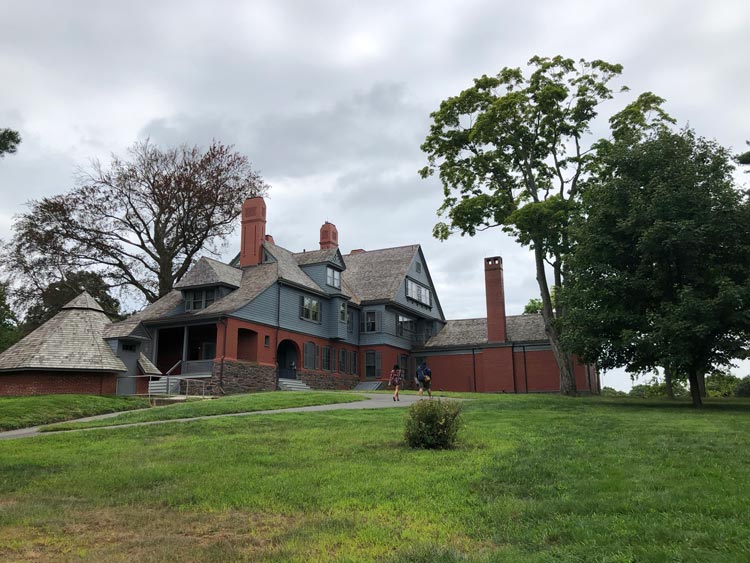
Sagamore Hill National Historic Site
The prime attraction in this region of Long Island is the Sagamore Hill National Historic Site, which was the home of Theodore Roosevelt, the 26th president of the U.S., from 1885 until his death in 1919.
Set on 95 acres in Cove Neck near Oyster Bay, this was the sprawling family home of Theodore and Edith Roosevelt and stayed so until the 1950s when it was opened up to the public by the Theodore Roosevelt Association.
As luck would have it, tickets for the popular interior tour were sold out when my family and I reached the 23-room Victorian Queen Anne-style house. It showcases the original furnishings, knickknacks, books, hunting trophies and other personal belongings of the Roosevelts.
Historically, this was the summer White House from 1902 to 1908, where Roosevelt wielded diplomacy for peace talks between Japan and Russia, leading to the Treaty of Portsmouth, which earned him the Nobel Peace Prize in 1906.
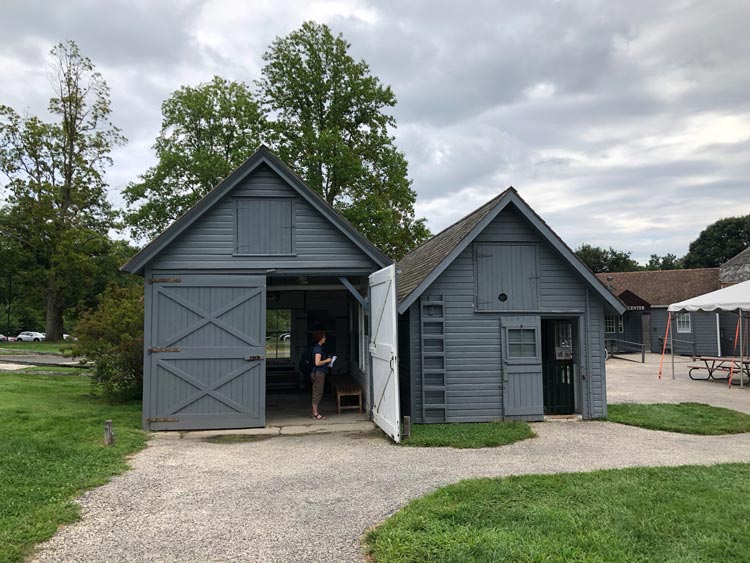
Theodore Roosevelt’s Working Farm
Our family decided to tour the grounds and its many buildings, which are free to visit. This was a working farm, as the Roosevelts cultivated much of the meat and vegetables for the family meals.
Our first stop was the farm shed and chicken house. For city people like us, it was exciting to see the collection of large wooden barrels and other farm equipment stored in the shed. I noticed a contraption with a bicycle seat and a large wheel that was labeled a chaff cutter, used to cut up straw and hay into small pieces.
The walls of the shed were lined with Roosevelt family pictures and there was a “birds-eye view” photo of the estate from 1918. The expansive grounds include a hiking and nature trail that leads to the waters at Cold Spring Harbor, meadows, forested areas and picnic spots.
Reaching the house, a sprawling beauty with its exterior of blue siding and red bricks topped with grey shingled gabled roofs and turrets, I was mesmerized by the gorgeous wrap-around porch. This was where Teddy Roosevelt held many of his public talks.
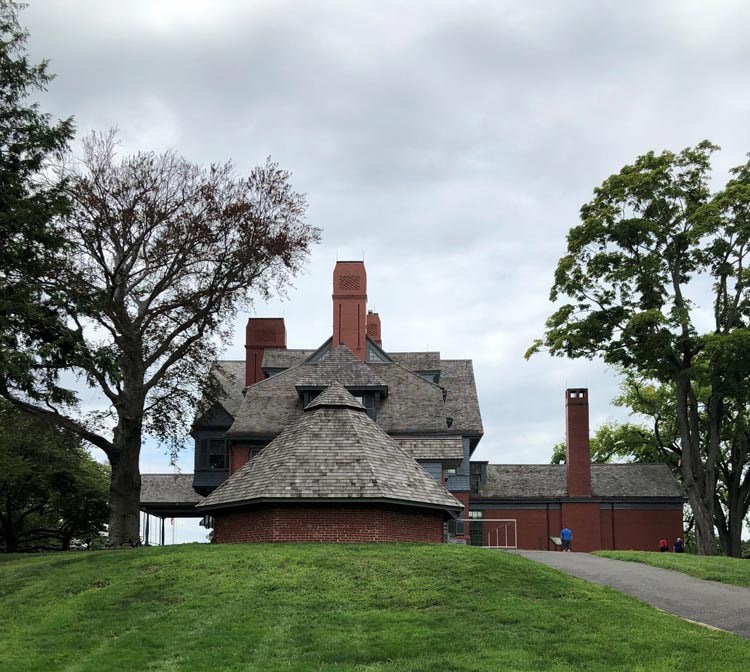
Now the porch is set up with a number of glossy white wooden rocking chairs and benches, where visitors can relax and take in the surrounding scenery. After doing just that, we decided to complete our tour here before moving on to the next spot of interest.
This is when I noticed a round structure with a conical roof, not actually attached to the house but located right by it. This was the Ice House, a fridge of sorts in the pre-electricity era, where ice was stored to be used inside the kitchen for refrigerating food.
Theodore Roosevelt home at Sagamore Hill is open Wednesday–Sunday. Admission is $10 per adult and can be visited only through guided tours. The grounds are free to visit daily.

Theodore Roosevelt Sanctuary and Audubon Center
A nice place to stop on the way back to town in Long Island is the Theodore Roosevelt Sanctuary, barely a 3-minute drive down the road from Sagamore Hill. This is the first National Audubon Society Songbird Sanctuary, established in 1923 for the conservation of local birds, wildlife and ecosystems.
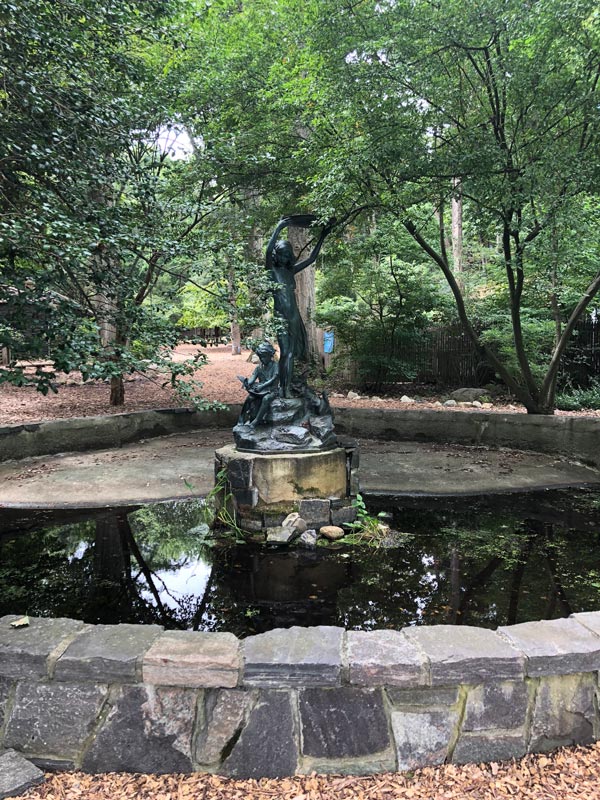
Sadly, the park inside was quite rundown, although I loved the old, bronze sculpture in the non-working fountain. It is the work of Bessie Potter Vonnoh, a sculptor whose most famous bronze is the Frances Hodgson Burnett Memorial in the Conservatory Garden of Central Park in New York City.
And although I did not see any exotic birds other than the ubiquitous sparrows, my daughter and I enjoyed looking at the hand-drawn pictures displayed on a board.
I read the names blue jay, northern cardinal, black-capped chickadee, American goldfinch and others, and looked at the perfectly drawn and painted birds and couldn’t help but think how nice it would be to see some of them.
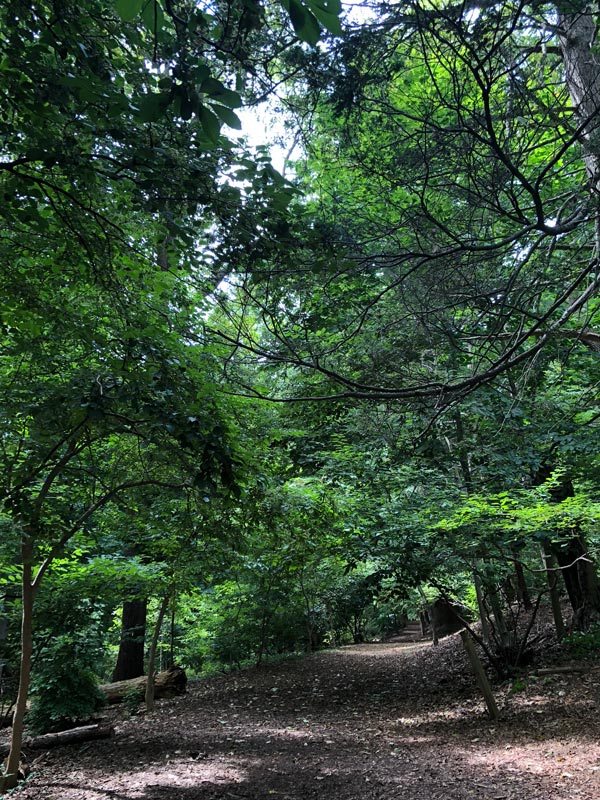
I later discovered that the place is undergoing a full-scale renovation and restoration process. As for us, we spent a few moments walking some of the trails and paths that were mostly covered in wood chips and we were happy to see the colorful flowering perennials and berry-covered shrubs along the trails.
The sanctuary is adjacent to Young’s Memorial Cemetery, the burial place of Theodore and Edith Roosevelt. His gravesite is the largest one in the cemetery and is reached by climbing 26 steps in a tribute to the 26th president of the U.S.
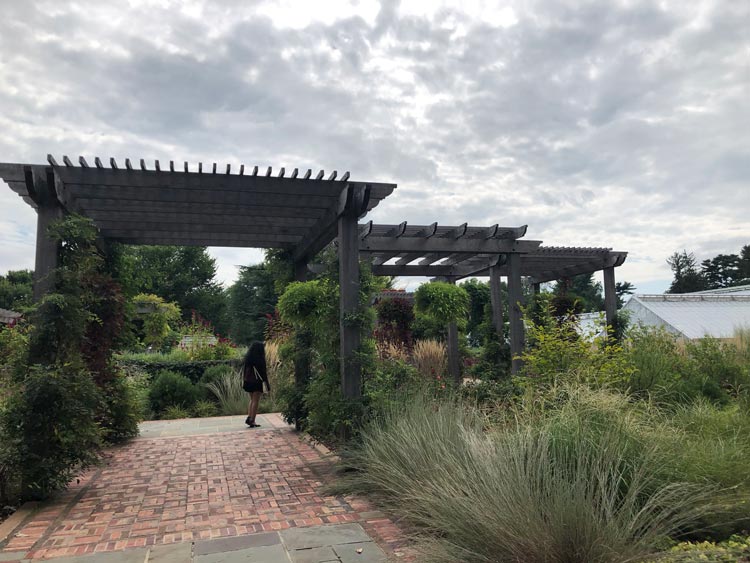
Planting Fields Arboretum State Historic Park
The next day on our way back to New York City, we stopped to explore another splendid Gold Coast estate, the Planting Fields Arboretum State Historic Park and Coe Hall, the mansion within.
Our luck remained the same this day, too, as we were unable to tour inside the house because tickets were sold out. But, no matter, we decided to tour the sprawling gardens.
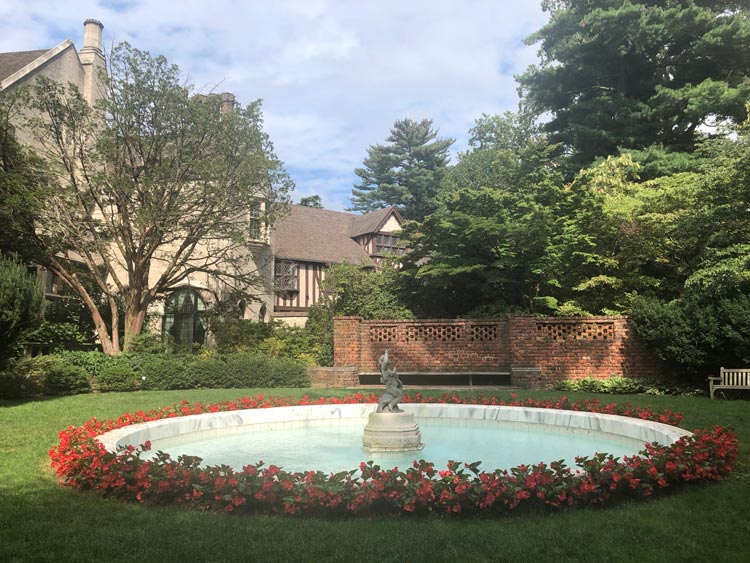
Planting Fields, spread out over 409 acres, is the estate of W. R. Coe and Mai Rogers Coe, from the early 1920s, with a mansion reminiscent of an English Manor and landscapes and gardens designed by the sons of Frederick Law Olmstead, the brainchild behind New York City’s Central Park. The grounds consist of greenhouses, parks, lawns, a variety of formal gardens and a breathtaking road lined with majestic beech trees.
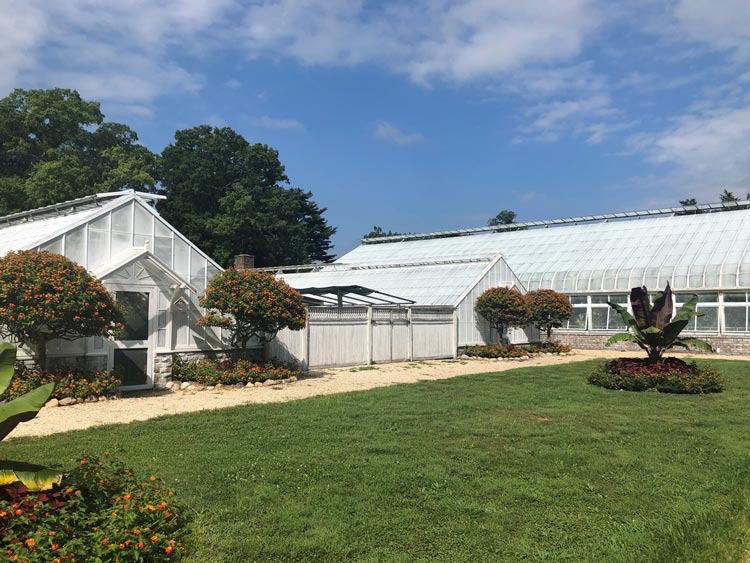
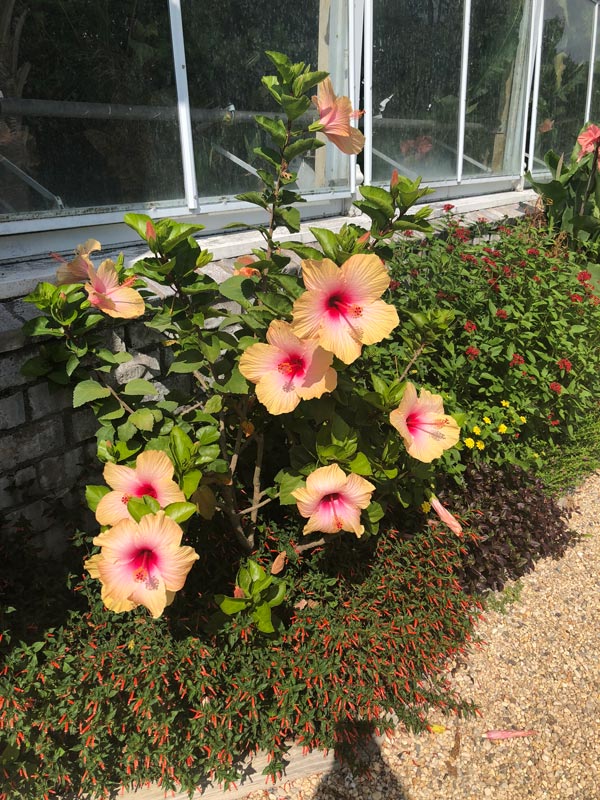
We started at the Main Greenhouse, also known as the Hibiscus House, whose construction began in 1914. Inside, the first thing I pointed out to my daughter were the glossy maroon banana flowers and the green papayas hanging from their trees, which instantaneously transported me to my childhood days in India.
Walking through the Rose Garden, the Perennial Garden, the hollies, hydrangeas and rhododendrons, we reached the Italian Garden, built in 1918. Originally a tennis court, the site was redesigned and replaced by a reflecting pool.
The garden embodies a classic Italian garden with sculptured urns, clipped topiaries and evergreen foliage. It was a favorite of Mai Coe who could view it from her bedroom window, according to the information booklet provided at the start of our tour. The Camellia gardens was our next stop and I enjoyed admiring the riotously colored blossoms.
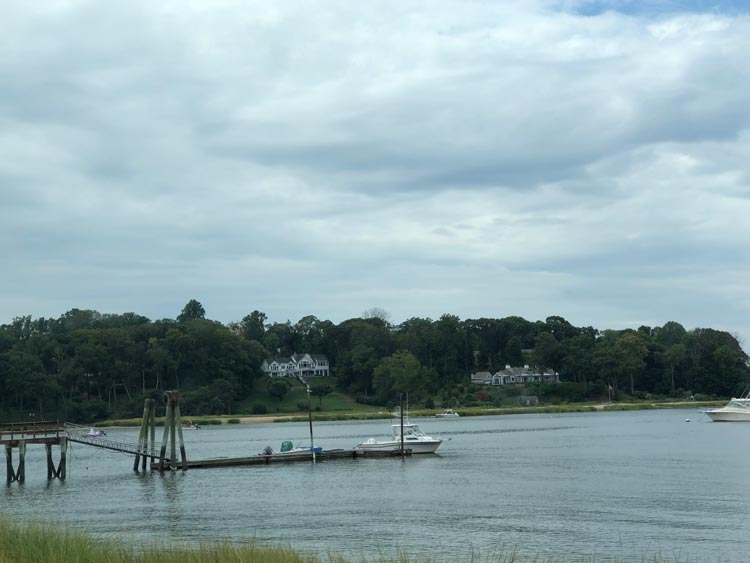
As the late afternoon sun shimmered over the gardens, it was time to say goodbye to Long Island and head back home. Along the way, the Long Island Sound waters glowed in the fading sunlight, and I caught glimpses of modern mansions hidden among the verdant greenery. I thought about how life must have been in the days when this area was home to some of America’s wealthiest families.
Where to Eat
Don’t be misled by these sleepy looking hamlets. These Long Island restaurants ranging from cheap eats to fine dining are there for your taking.
2 Spring
The chef here is an Iron Chef winner who previously ran two restaurants in New York City. The menu is contemporary and offers varieties of appetizers, small plates, luncheons and dinners. Chef Jesse Schenker offers a special 10-course tasting menu on Mondays. Only caveat: reservations have to be done at least a month in advance even for a regular meal.
Wild Honey Dining and Wine
A chic place with high ceilings, this restaurant is located in a landmark building that housed the summer offices of President Theodore Roosevelt. Go here for the delectable pastas, seafood and luscious desserts.
Sweet Tomato
If simplicity is more your style, this charming café has an assortment of choices, from soups and salads to hot bowls and wraps. The restaurant serves breakfast, lunch and dinner.
If You Go
Sagamore National Historic Site
20 Sagamore Hill Road,
Oyster Bay, NY 11771
https://www.nps.gov/sahi/index.htm
Theodore Roosevelt Sanctuary and Audubon Center
134 Cove Road,
Oyster Bay, NY 11771
https://ny.audubon.org/about-us/centers-sanctuaries-chapters/theodore-roosevelt
Planting Fields Arboretum State Historic Park
1395 Planting Fields Road,
Oyster Bay, NY 11771
https://plantingfields.org/
Author Bio: Susmita Sengupta, an architect by background, from New York City, loves to travel with her family. Her articles have been published in Go Nomad, Travel Thru History, Go World Travel, Travel Signposts, In The Know Traveler and the Travelstoke App.
